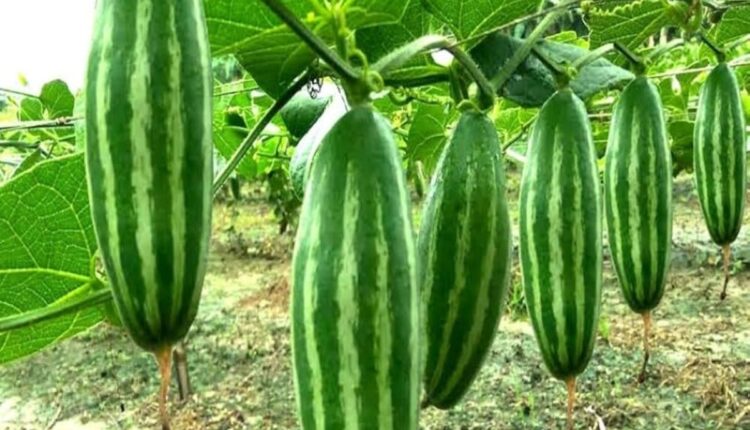Parwal, also known as pointed gourd, is a popular summer and monsoon vegetable in many parts of eastern and northern India. It is commonly grown in Bihar, Uttar Pradesh, Jharkhand, West Bengal, and Odisha. The vegetable is in demand for its taste, nutritional value, and steady availability during the rainy season.
Unlike most vegetables, parwal is a perennial climber that gives harvests for several months once it starts fruiting. Farmers often grow it along trellises or fences, which helps the plant climb and spread, making it easier to manage and harvest. A small field of parwal can give regular income without much input cost after the initial setup.
Parwal is not grown from regular seeds. It requires vine cuttings or tuber roots to propagate. This makes it different from crops like cucumber or pumpkin. Once established, a parwal plant can remain productive for three to five years, but commercial farmers often replant it every season for better yield.
The crop grows best during the monsoon, when the soil remains moist and temperatures are warm. Farmers usually begin preparing the field in June and plant the vines before the heaviest rains arrive. The plant can tolerate moderate rainfall but needs good drainage to prevent root damage.
Because of its growing market demand, parwal offers a good source of income, especially for small and medium farmers. With proper care and planning, you can harvest it for up to four months and sell it regularly in local markets or through vegetable vendors.
When to Plant
Best time to plant parwal is June to July.
It needs warm weather and regular rain.
Avoid planting during heavy floods or waterlogged fields.
Where to Grow
Parwal grows well in sandy loam soil with good drainage.
Raised beds are better in areas with heavy rain.
Choose a field that gets 6–7 hours of sunlight daily.
How to Get Seeds or Vines
Parwal does not grow from seeds. You need to use rooted cuttings or tubers.
Cut healthy vines from old plants—about 6 to 8 inches long.
Use cuttings with at least 2–3 nodes (buds).
How to Prepare the Field
Plough the field 2–3 times.
Mix compost or cow dung in the soil.
Make raised beds or rows, keeping a distance of 1.5 to 2 feet between plants.
Water the field once before planting.
Dig small pits or holes about 3–4 inches deep.
Place the vine cutting with buds facing up.
Cover lightly with soil and press gently.
Water the plants right after planting.
Support System
Parwal needs support to climb.
Use bamboo, sticks, or wires to create a trellis system.
Set up support after 20–25 days of planting.
Watering and Care
During monsoon, natural rain is enough.
Water only when soil is dry or after a gap in rain.
Keep the area weed-free.
Add cow dung or liquid compost every 15–20 days.
Common Pests and Diseases
Watch for red pumpkin beetle and leaf spot.
Use neem spray or soap water for beetles.
Remove infected leaves by hand.
Don’t overwater—it causes root rot.
Harvesting
Parwal is ready to harvest after 70–80 days.
Pick the fruits when they are green and medium-sized.
Harvest every 3–4 days to boost growth.
Parwal continues to give fruit for 3–4 months.
Storage and Selling
Don’t wash parwal before storage.
Keep in a cool, dry place.
Sell the same day in local markets for better rates.
Parwal sells well in urban areas—connect with local traders or mandi.
Profit and Yield
From 1 bigha, farmers get 6 to 8 quintals of parwal in a season.
Market rate varies between Rs. 25 to 40 per kg, depending on timing.
Cost is low, and returns are steady over months.
Contact details: If farmers want to share information or experiences related to farming with us, then they can do this by calling us on the phone number 9599273766 or by writing an email to [email protected] or by sending your recording. Through Kisan of India, we will convey your message to the people, because we believe that if the farmers are advanced then the country is happy.



